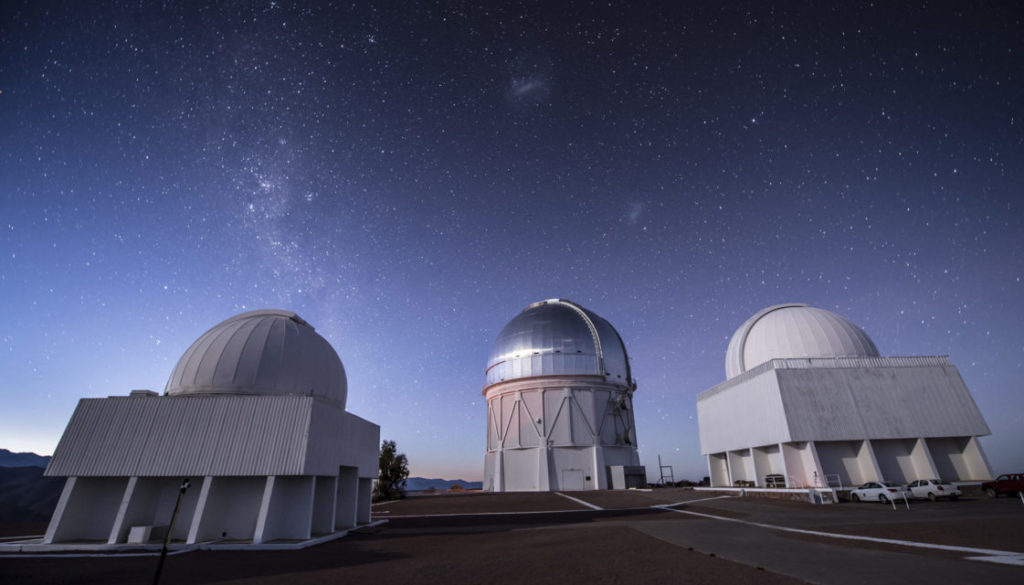Dark Energy Survey Publicly Releases First Three Years of Data
COLLEGE STATION —
Texas A&M University astronomers are among hundreds of Dark Energy Survey (DES) scientists globally celebrating today’s public release of the survey’s first three years of data.

This image shows the full area of sky mapped by the Dark Energy Survey and the eleven newly discovered stellar streams. Four of the streams in this diagram — ATLAS, Molonglo, Phoenix and Tucana III — were previously known. The others were discovered using the Dark Energy Camera, one of the most powerful astronomical cameras on earth. (Credit: Dark Energy Survey.) 
Each color in the image corresponds to the distance of stars. Blue is closer, green is farther away, red is even farther. Several stellar streams are visible in this image as yellow, blue and red streaks across the sky. (Credit: Dark Energy Survey.) 
Pictured is Andrew Pace. Texas A&M Mitchell Postdoctoral Fellow in Astronomy Andrew Pace was part of the DES team that vetted the data included in today’s release, examining the vast collection to “ensure that the data would be useful for the entire astronomical community.” (Credit: Andrew Pace.) 
Texas A&M astronomy graduate student Peter Ferguson conducted a significant part of the analysis in the DES paper announcing one of the new discoveries enabled by the data set — the detection of 11 new streams of stars around our Milky Way. (Credit: Peter Ferguson.) 
Texas A&M astronomer Darren DePoy served as the project scientist for the Dark Energy Camera, one of the most powerful survey instruments of its kind that is able to see light from more than 100,000 galaxies up to 8 billion light years away in each snapshot. (Credit: Reidar Hahn/Fermilab.)
The post Dark Energy Survey Publicly Releases First Three Years of Data appeared first on College of Science.





